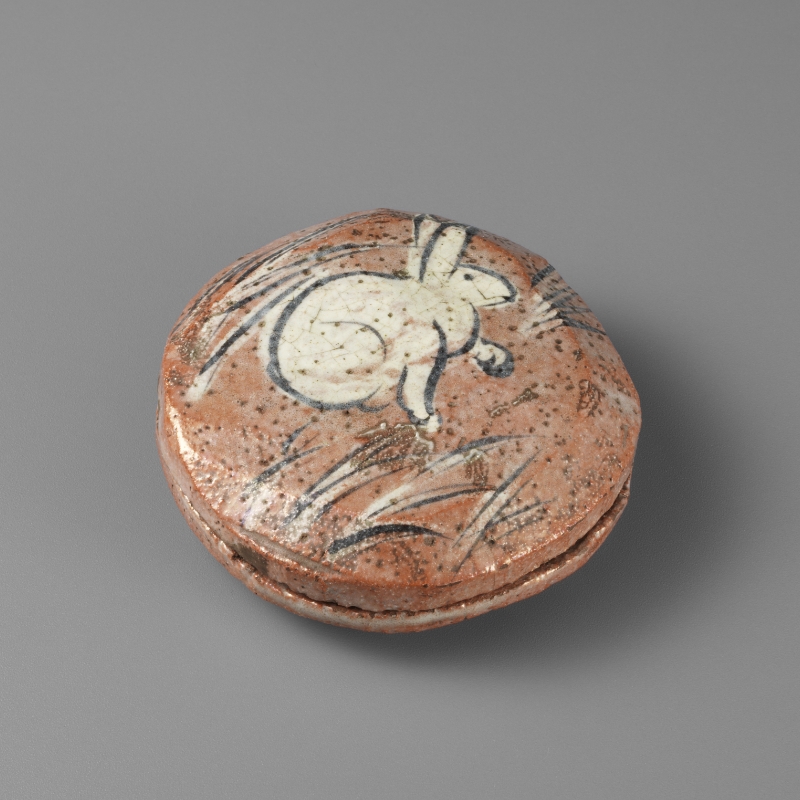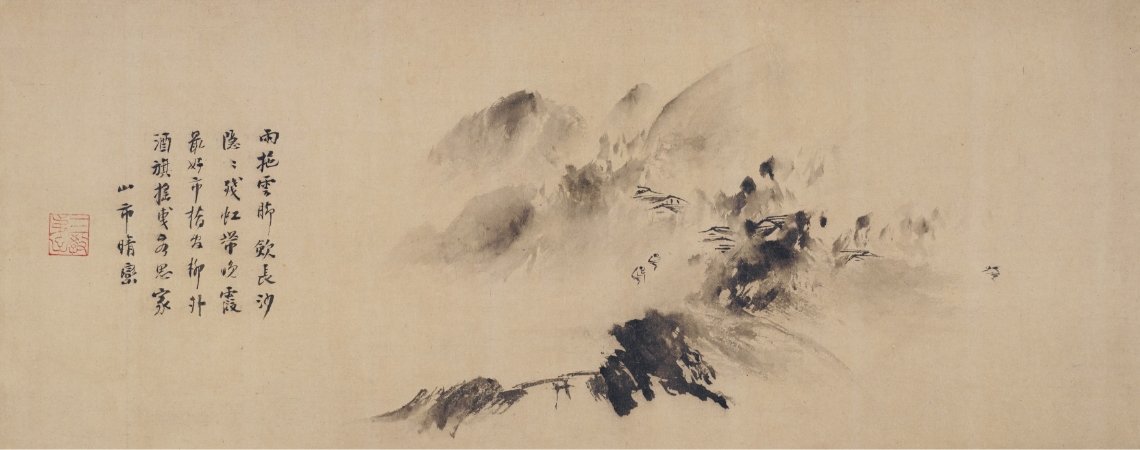- TOP
- Exhibitions
- Ⅲ
-
- July20Sat
- August25Sun, 2024
Masterpieces of Japanese and Chinese Ceramics―Rediscoveries in the Collection
It was in 1910 that Idemitsu Sazo (1885-1981) discovered the beauty of Chinese ceramics during his corporate expansion in Northeastern China. The fondness he nurtured toward such works eventually inspired him to collect precious ceramics and crafts. Under the guidance of internationally known researchers Koyama Fujio (1900-75) and Mikami Tsugio (1907-87), Sazo further aspired to enrich his collection. We hope you enjoy the best of the arts and crafts works from the museum collection including Chinese, Japanese and East Asian ceramics as well as lacquer and bronze ware.
Exhibition Works
Chinese Ceramics
-

Jar with Design of Dragon
China 1426-35
-

Pair of Vases with Design of Dragon
China 1736-95
Korean Ceramics
-

Gourd-Shaped Pitcher with Saucer and Incised Design of Peony Scroll
Korea Early 12th Century
-

Lidded Jar with Four Ears and Design of Peonies
Korea 15th Century
Japanese Ceramics
-

Tea Leaf Jar with Design of Poppies
Japan 17th Century
-

Covered Octagonal Jar with Design of Birds and Flowers
Japan Late 17th Century
Tea Ceremony Utensils
-

Incense Container with Design of Hare
Japan Early 17th Century
-

Mountain Village in the Clearing Mist
China 13th Century
【On view from August 6 (Tue) to August 25 (Sun)】
Arts and Crafts / Bronze Ware
-

Bracket-Lobed Cover Box with Design of Pavilions and Figures in Garden Setting
China 14th Century
【On view from August 6 (Tue) to August 25 (Sun)】
-

You, Wine Vessel with Double Owl-Shaped Body
China 13th-11th Century B.C.
Introduction of Chapters
-
Chapter 1: Highlights of Japanese and East Asian Ceramics
Ceramics of Japan and of East Asia, which were born in China and the Korean peninsula, have developed original characteristics based on their natural environments, cultures, and traditions of each country and region. And the outstanding characteristics of each region are introduced under the following topics. For Chinese ceramics, we will focus on the “Silk Road” and “imperial ware.” For Korean and Japanese ceramics, we will view the “exchanges,” “influences of Chinese ceramics,” “departure from Chinese ceramics,” and “development of originality” seen through the works. This chapter introduces the interinfluences amongst the ceramics of Japan and East Asia as well as the characteristics of diverse works by highlighting masterpieces from the Museum collection.
-
Chapter 2: Chinese Ceramics
China is known for pioneering in the innovative creation of durable and beautiful monochrome ceramic ware such as celadon and white porcelain. On the other hand, they have also produced Tang sancai (three-colored) ware in the ancient period, and later in the Yuan period, blue and white (underglaze blue) ware emerged. Rich in design yet beholding a calming beauty, blue and white (underglaze blue) ware were created by combining cobalt and a white porcelain body. During the Ming and Qing dynasties, we begin to see the abundant use of colors including red, yellow, green, and pink. Additionally, the increasing application of designs and forms of plants, animals, human figures, and others imbued with auspicious meaning become apparent. Among such works, the official imperial ware (guanyao) contains the essence of ceramic technique used at the time and continue to appeal to contemporary audiences today.
-
Chapter 3: Korean Ceramics
Celadon ware from the Goryeo dynasty and white porcelain and blue and white (underglaze blue) ware from the Joseon Dynasty are representative ceramics of Korea. The production of these ware began as Korea was influenced by the ceramics of China. Celadon from the Goryeo dynasty present beautiful colorations of glaze, which were called “bisaek” (color of kingfisher’s feathers) by the people at the time. They were also valued as the “best in the world” by the people of China during the Song Dynasty. Further, a new decorative expression employing the inlaid technique became popular during the Goryeo dynasty. Later, the Joseon dynasty saw an emergence of white porcelain ware with graceful and rich forms as well as blue and white (underglaze blue) ware with unique use of patterns, compositions, and space. This chapter introduces the exquisite world of ceramics that flourished at the Korean peninsula.
-
Specially Featured Topic 1: Masterpieces of Metalware, Bronze Ware, and Lacquerware
There has been a long history of fine arts and crafts in East Asia, and bronze ware and lacquerware are symbolic works that represent the genre. Bronze ware, which have been praised as masterpieces of Chinese art, developed as vessels to be used during rituals. They were popularized during the ancient Shang (Yin) and Zhou dynasties and were cherished in later periods and were valued even during the Qing period. Lacquerware has also been produced since the ancient times. Gorgeous and elegant works of lacquerware have been created by combining different materials such as shells and gold. This specially featured topic focuses on captivating works of metalware, bronze ware, and lacquerware from the Idemitsu collection.
-
Specially Featured Topic 2: Masterpieces of Tea Ceremony Utensils
The culture of drinking tea that arrived with the flow of Zen Buddhism during the Kamakura period evolved throughout the Muromachi, Momoyama, and Edo periods, forming its own distinct culture of “tea.” They reflected the esthetics of the Japanese people such as wabi sabi (imperfect and rustic beauty). With the development of cha no yu tea ceremonies, works of art also came to be appreciated and used. This specially featured topic not only introduces vessels used in cha no yu including tea containers and tea bowls but also hanging scrolls, tea kettle, and other highlight works from the Idemitsu collection. We hope you enjoy the arts of cha no yu.
-
Chapter 4: Japanese Ceramics
Like Chinese ceramics, the ceramics of Japan have a long history. Influences of Korean ceramics are apparent in the earthenware from the Yayoi period and Sue stoneware, and of Chinese ceramics in glazed ceramics of the Heian period onwards. However, Japanese ceramics have taken its own course in their production. The patterns and forms of vessels used in cha no yu tea ceremonies and cuisines reveal a sense of creativity unmatched with those of China and Korea, and further, Japanese ceramics have shown their wide variety according to their locations of creation. As the production of porcelain began during the first half of the 17th century, they were also exported overseas and ceramic production that catered towards the international market took shape. At the capital of Kyoto, ceramics inspired by courtly culture and imbued with elegance and literary meaning such as the works by Nonomura Ninsei (dates unknown) and Ogata Kenzan (1663-1743) gained their popularity.





